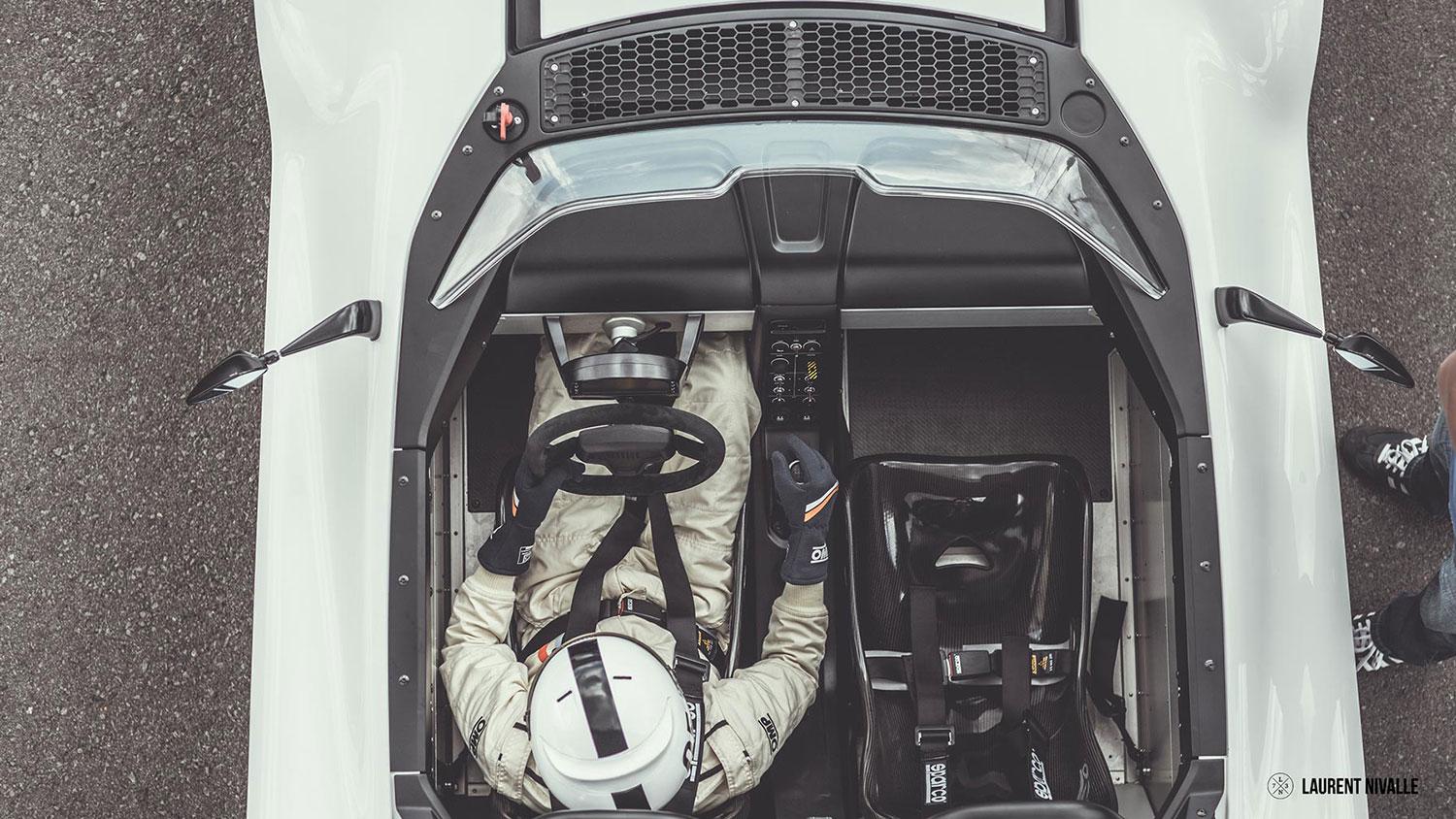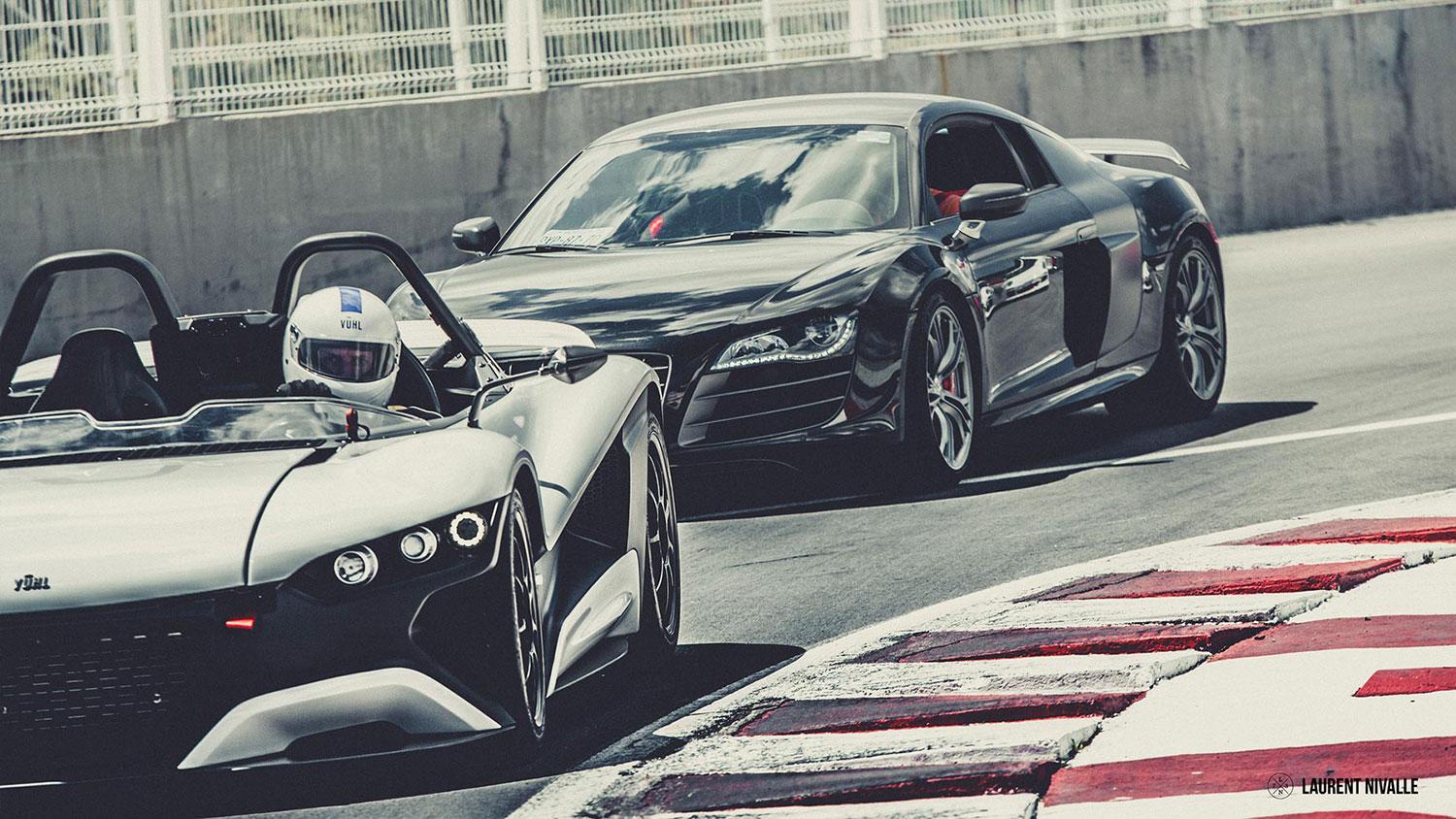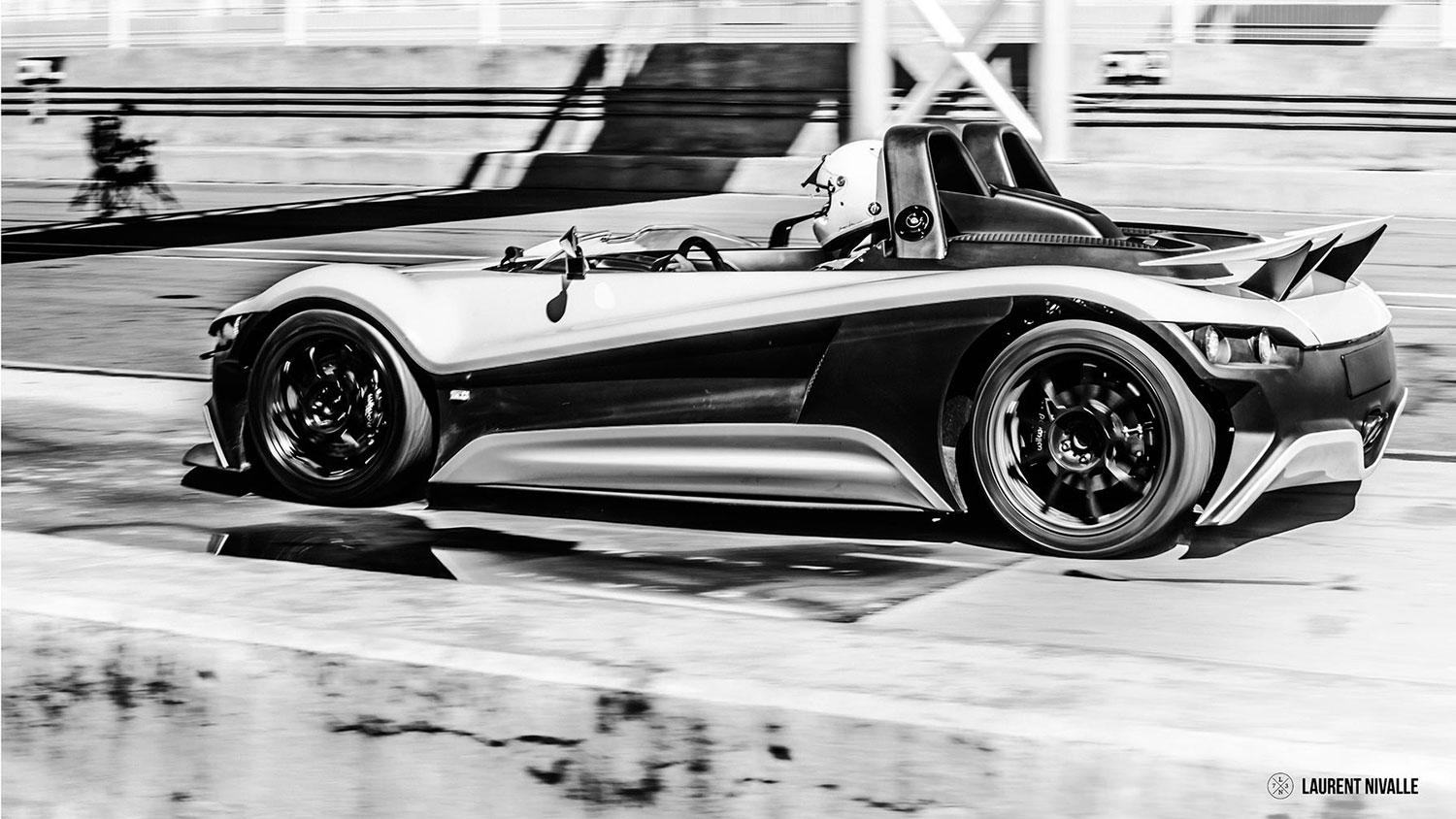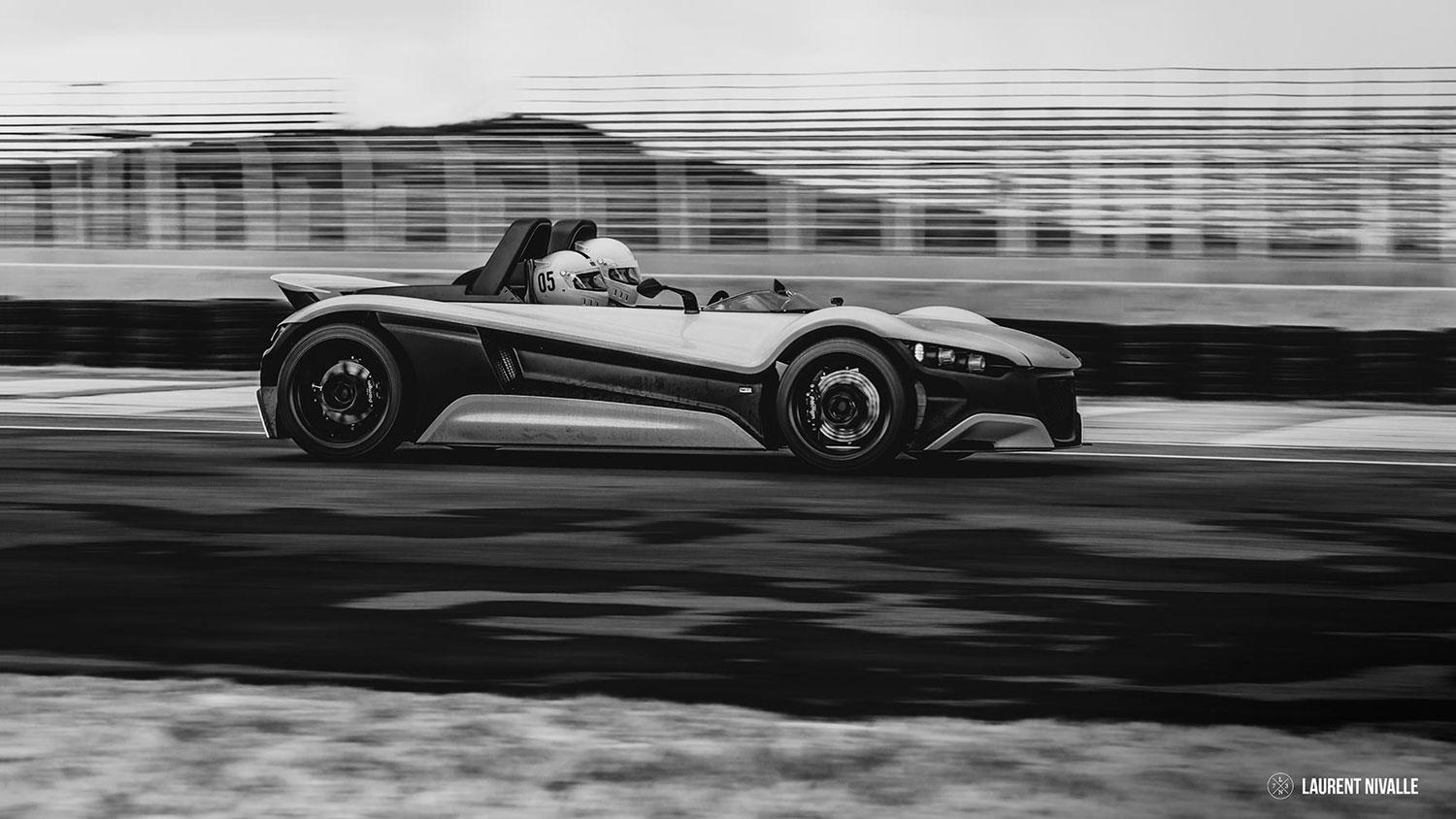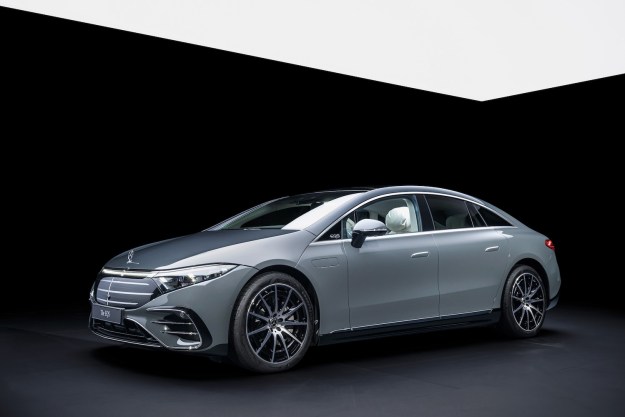At the 2013 Goodwood Festival of Speed, Mexican-born F1 prodigy Esteban Gutiérrez carved his way up the event’s hill climb in a lightweight track car called the Vuhl 05. The carbon fiber bombshell opened the eyes and eardrums of many, but we haven’t heard much since. Well, the silence has been pierced by the sound of a raucous EcoBoost engine, because the very first production model has been delivered to a customer in Mexico.
The Mexican-built Vuhl — pronounced “Vool” — is built around an aerospace-inspired honeycomb chassis made from aluminum. The construction is both lightweight and strong, as the 05 weighs just 1,532 pounds but employs a three-stage forward crash structure and double layer sidewalls for optimum safety. We still recommend wearing a helmet though, because the Vuhl has no windshield.
Providing power is a mid-mounted EcoBoost four-cylinder that makes 285 horsepower, all of which is routed to the rear wheels via a six-speed manual gearbox. Flat out, the two-seater will rocket to 60 mph in 3.5 seconds before reaching its top speed of 150 mph.
Despite being street-legal, the car was clearly designed for the track. Its low weight and high-ratio rack and pinion steering ensure that it stays controlled and responsive through the bends, while the double wishbone suspension helps keep all four wheels on the ground. Braking is managed by four-pot alloy calipers, which bite into ventilated and cross-drilled rotors all around. The Vuhl’s aerodynamics have been fine-tuned as well, as the 05 boasts a flat underbody, front and lateral splitters, a rear diffuser, and a rear spoiler.
The vehicle is currently being launched in Mexico, the Middle East, and the U.K. for a launch price of £59,995 ($93,500), which includes a glass-reinforced plastic body. Options like a built-in HD camera, carbon bucket seats with suede trim, a quick-release steering wheel, and a carbon fiber body — which saves an additional 66 lbs — are also available.
“It is naturally very rewarding to have a bank of orders for Mexico and the Middle-East, but we fully recognize the importance of the UK market and have therefore worked especially hard to ready the car for sale in this territory. This has included creating a special all-inclusive launch price of £59,995,” said VUHL Managing Director Guillermo Echeverria.
Special indeed.
Editors' Recommendations
- Bloodhound supersonic car can be yours for just $11 million
- Mercedes-Benz safety-car concept monitors the road ahead and your kids

